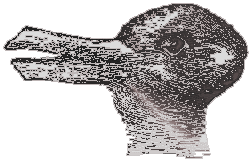 Gregory Eiselein
Gregory Eiselein Gregory Eiselein
Gregory Eiselein
The midterm exam will be worth 50 points. Please bring a blank blue book or blank loose-leaf paper for your answers on October 8th. You may not use your books or your notes. There will be three parts to the exam.
Part 1. Identifications. This section will be worth 12 points. I will give you five quotations from texts we've read this semester. You will need to identify four of them by providing the name of the author, the title, and an explanation of the quotation's significance.
Part 2. Short Answer. This section will be worth 8 points. I will give you brief questions about the texts. You will answer each question.
Part 3. Essay Questions. This section will be worth 30 points. I will provide you with two of the following questions. You will need to write an essay in response to one of the two.
1. Choose two of the following three texts: Twain's Pudd'nhead Wilson, Zitkala-Sa's American Indian Stories, or Jacobs's Incidents in the Life of a Slave Girl. Compare (and contrast) how the two authors portray the family. In what ways is the family a source of power? In what ways is the family a constraint on individual freedom, power, self-development, and self-expression? To what extent does race or ethnicity draw the members of the family closer together through their shared ancestry or cultural bonds? To what extent does race or ethnicity divide, separate, or alienate the members of the family?
2. The notion of cultural heterogeneity, hybridity, or mixing seemingly links all five of the authors we've read so far this semester. This idea appears sometimes as cross-cultural interest in another group or ethnicity (as in Lazarus or Cabeza de Vaca), sometimes as characters who are biracial (as in Twain, Jacobs, or Zitkala-Sa), or sometimes as borrowings from different cultural traditions in the creation of the text (Jacobs, Lazarus, Zitkala-Sa). But we might also cite several other elements as examples of this cultural mixing: racial cross-dressing as a theme or plot device, deliberate address to a mixed audience, complication or problematization of simpler conceptions of racial or ethnic identity, race disloyalty, and so on.
Choose any two of the texts we've read so far this semester and write an essay that explains how those two selected texts differently represent cultural heterogeneity, cultural hybridity, or cultural mixing. Please pay attention to the texts formal elements (style, language, figuration, genre, etc.) as well as it thematic elements and cultural contexts.
3. Consider any of the texts that we have read so far this semester. Which one of these texts would you see as the most political or the most effective politically? Why? What are its political aims? How does it try to use literary writing to achieve those aims?
Which one of these texts would you see as the most literary? Why? What are the features that distinguish it as a literary text? To what extent, if any, do political aims become an important part of the literary expression in the text?
4. Consider any of the texts that we have read so far this semester. In your opinion, which text gives us the most complete picture of an individual (fictional or not) and his/her personality? How does this text accomplish this representation of individual identity? Give specific examples. In your opinion, which text gives us the most extensive picture of a people, culture, or ethnic group? How does this text accomplish this representation of a communal identity? Give specific examples.
5. Select two of the following four authors: Lazarus, Cabeza de Vaca, Zitkala-Sa, or Jacobs. Using what information you can gather from their texts, describe their reading audiences. Then compare the ways in which those intended audiences may have shaped the text, its style, its purpose or function, and its meaning.
Note: While studying for this examination, please keep in mind that I am looking for your answers to be as specific as possible. Persuasive, informed use of concrete details selected from the works we studied will really strengthen your answers – regardless of the specific position you take.
Greg's Home | Department of English | Graduate Studies | Cultural Studies | Visual Culture | Kansas State University |
This page was updated on 1 October 2004. Other pages on this site may have been updated more recently.
These pages are copyright © 1995-2004 Gregory Eiselein.